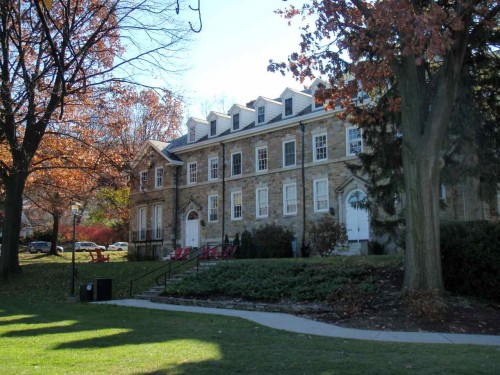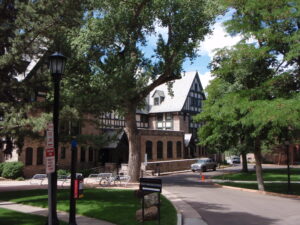What Is a Liberal Arts College?

Why do I keep recommending liberal arts colleges?
- Smaller classes mean students get more personalized attention
- Huge focus on real world application of knowledge – internships, undergraduate research, hands-on learning
- Campus resources are devoted to undergraduates (money, time with professors—almost no TA’s, campus programs, research opportunities)
- Great preparation for and acceptance into graduate and professional schools
- Environments where students are helped with the transition from high school to college (small seminars, professors who know students by name, smaller campus feel)
- Higher graduation rates than big state universities
- Great education!
What is the educational emphasis at liberal arts colleges?
Liberal arts colleges tend to focus exclusively on undergraduate education: the sequence of classes required for a student to earn a bachelor’s (or “four year”) degree. This means that campus programs and funding are focused on undergraduate education. Faculty at liberal arts colleges can devote more time to teaching undergraduates and assisting them with research opportunities. It is almost unheard of to have a teaching assistant (TA) teach a class at a liberal arts college. And it is not unusual for professors to call or check in on students who have been absent from class.What is the curriculum like at a liberal arts college?
Liberal arts colleges operate on the belief that if students are taught critical thinking and communications skills, they will be able to apply them to any field of study or profession. A liberal arts curriculum begins with a foundation in literature, philosophy, language, history, mathematics, and science and allows students to develop their intellectual abilities, rather than study for a single professional or vocational program. This type of academic preparation doesn’t hold graduates back when it comes to future endeavors. Ask any liberal arts college you visit about the success of their graduates. You will find employment and acceptance rates that rival any other schools on your list. (Grad schools and employers know the quality of work these grads are used to producing!)How big are liberal arts colleges?
Most liberal arts colleges have 2,000 or fewer students. Classes are traditionally small–fewer than 20 students. The low student-to-faculty ratio allows students to work closely with their professors. Most liberal arts graduates will have had multiple opportunities for hands-on projects, research, internships, and other collaborations with faculty by the time they graduate. Many liberal arts colleges have made these experiences a required part of the curriculum. This close collaboration and personal interaction wouldn’t be possible on a campus with tens of thousands of students.What is the student experience like at a liberal arts college?
Most liberal arts colleges are residential, most students live on campus making it easy to work on group projects or continue a discussion once class ends. Liberal arts colleges seek to connect classroom learning and campus experiences to real world applications. Part of this process lies in the collaborative nature of the education at these colleges. These are not commuter schools or places where a student can drop in unnoticed to pick up a credit or two. They are communities. Liberal arts colleges rarely have big Division I athletics programs, but they often have Div. II or III teams and plenty of club and intermural sports. (Colorado College is a small liberal arts school with a Div.I Ice Hockey team!) Student life is sometimes more involved at these schools because they create such a sense of community. Not everyone is looking for a liberal arts college experience. It is not the place to skip class for most of the semester, try to hide while you catch a nap in the back of the lecture hall, or try to commute in just to pick up a class credit. I know a lot of students have a hard time imagining a college with fewer students than their high school, but I wish more families would keep an open mind and visit a liberal arts college or two before making any decisions. Did You Know?
Martianus Capella, a Roman scholar in the fifth century AD, defined seven liberal arts essential to a classical education: grammar, rhetoric, dialectic, music, arithmetic, geometry, and astronomy. These seven subjects were the foundation of a liberal arts education in the medieval universities and were known as the seven pillars of wisdom.]]>
Did You Know?
Martianus Capella, a Roman scholar in the fifth century AD, defined seven liberal arts essential to a classical education: grammar, rhetoric, dialectic, music, arithmetic, geometry, and astronomy. These seven subjects were the foundation of a liberal arts education in the medieval universities and were known as the seven pillars of wisdom.]]>
Campus Visit: University of Richmond - College Prep Results
[…] said before that I am a big fan of liberal arts colleges and the quality of education and opportunities available to students. University of Richmond lives […]